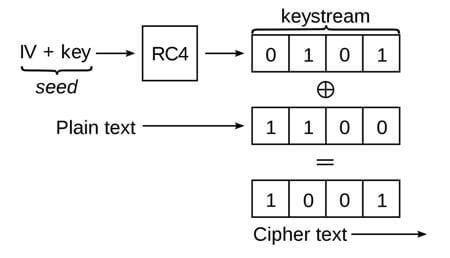

There is still a vulnerability that brings security problems because a hacker can get access to a secured WPA2 network and get access to certain keys to attack other devices on the same network. The most significant improvement in the WPA2 security standard is the implementation of the Advanced Encryption Standard (AES), which provides higher security and performance. WPA2 was ratified as the new Wi-Fi security standard in 2004. WPA-Enterprise provides the security needed for wireless networks in business environments where a RADIUS server is deployed. WPA-Personal is a common method to secure wireless networks, and it is suitable for most home networks.

In the WPA standard, there is a diversity between the two modes: WPA-Enterprise and WPA-Personal, which use different encryption methods. 256-bit encryption technology was introduced to WPA, which is an obvious increase compared with the 64-bit and 128-bit encryption in the WEP system. In 2003, as WEP gradually performed its weakness, WPA was adopted by the Wi-Fi Alliance as an alternative for WEP. Therefore, WEP, as a highly vulnerable wireless security protocol that can not bear its responsibility for protecting security, was finally replaced by WPA. Even though the limitation was broken through and increased to 128-bit, there were also many security issues in WEP that made the keys easy to crack. Nevertheless, at that time, cryptographic technology was restricted and the Wi-Fi devices were limited to 64-bit encryption. WEP is used at the two lowest layers of the OSI model – the data link and physical layers it therefore does not offer end-to-end security. However, it has been found that WEP is not as secure as desired. A secondary function of WEP is said to prevent unauthorized access to a wireless network. It was initially expected to deliver the same security level as wired networks. WEP stands for Wired Equivalent Privacy, and it was the first Wi-Fi security protocol approved in September 1999. Stroll through the history of Wi-Fi security protocol upgrading, you will find out the characteristics of the wireless security protocols and get to know what fits you most. If you log in to your wireless router or access point and check the wireless security section, it will present generally four options of Wi-Fi security protocols: Wired Equivalent Privacy (WEP), Wi-Fi Protected Access (WPA), Wi-Fi Protected Access version 2 (WPA2) and Wi-Fi Protected Access version 3 (WPA3). This article will focus on the four types of Wi-Fi security protocols, namely WEP, WPA, WPA2 and WPA3, and make a comparison among them to enable users to gain an in-depth understanding of Wi-Fi security while choosing wireless devices. To make wireless networks more secure and effective, Wi-Fi security protocols have been developed and undergone updates to compensate for security flaws. Since the early days of being adopted, wireless networks have been considered insecure, unlike wired ones.


 0 kommentar(er)
0 kommentar(er)
